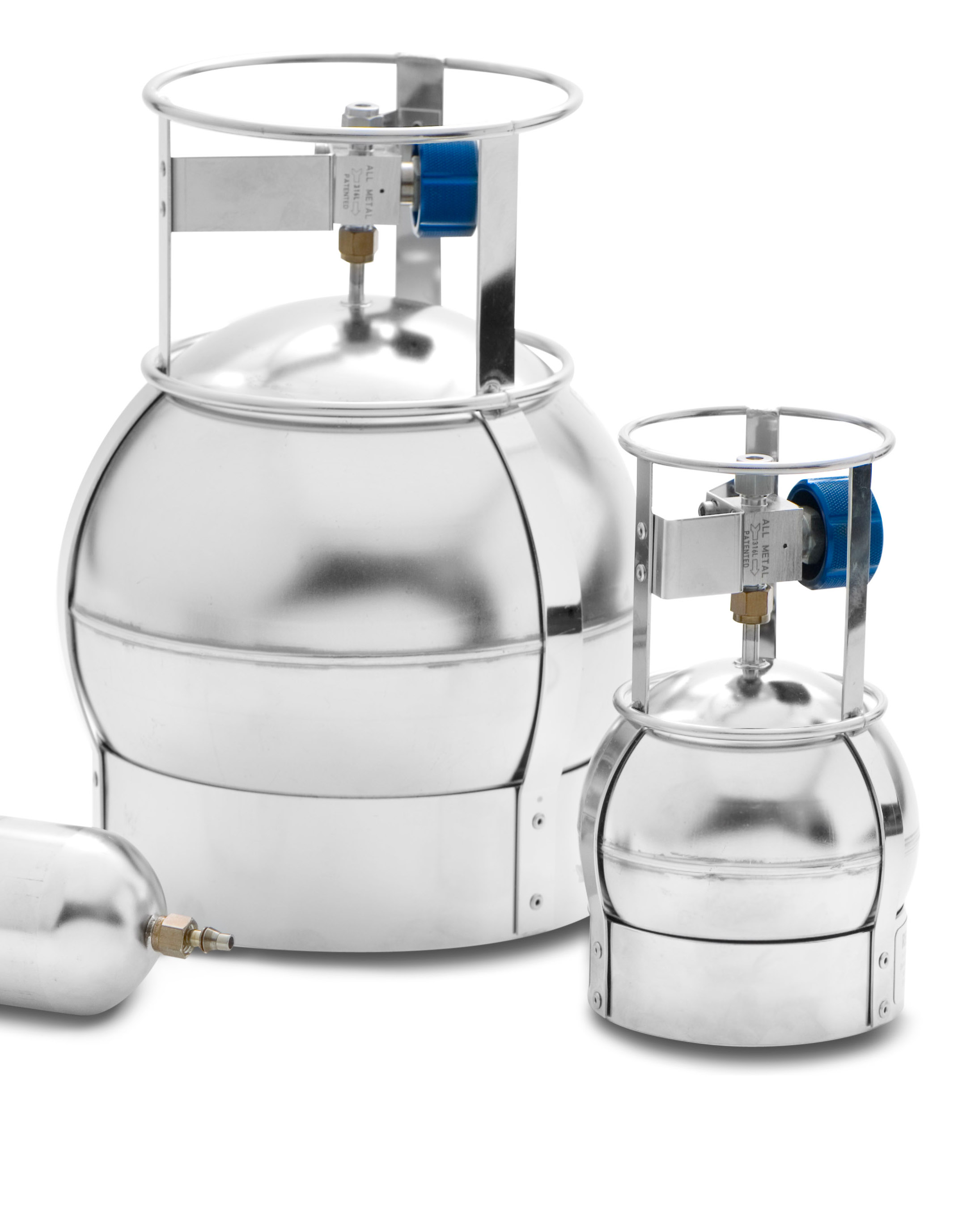
The changing face of TO-15 canister air monitoring
14 January, 2019
Evolution of TO-15-type Cannister

Canisters are a very popular method of air sampling, and have long been used in the USA to monitor volatile organic ‘air toxics’, largely for reasons of convenience and historical continuity. They are now also becoming increasingly widespread in China.
For many analysts, the most familiar canister method is US EPA Method TO-15 – indeed, to the extent that the term ‘TO-15’ is often used to refer to canister sampling in general.
In this post, I’ll explain how TO-15-type canister methods have evolved over the years, and highlight some developments that are now changing how analysts approach canister monitoring of air pollutants.
What's involved in canister analysis using US EPA Method TO-15?
US EPA Method TO-15 describes in a general way the process of canister sampling and analysis, using trap-based preconcentration and GC–MS. As a performance-based method, it does not provide detail on how to carry out the analysis, but rather provides a set of criteria against which to judge compliance of a particular procedure.
Although 97 of the compounds listed in the 1990 Amendments to the US Clean Air Act Amendments are volatile organics (and thus applicable to TO-15), in practice only 65 of these are used to assess instrument compliance with the method. These compounds range in volatility from propene to naphthalene, and include a handful of oxygenated species (OVOCs, such as esters and ketones), as well as halogenated and non-halogenated hydrocarbons.
Many other countries have adopted the TO-15 methodology, either as it stands, or by bringing it within their own system of standards. The key example of this is China, where the requirements of TO-15 are essentially mirrored within Method HJ 759, issued by the Chinese Ministry of Environmental Protection (often referred to as the ‘Chinese EPA’).
Revisions of TO-15 with lower detection limits
Since US EPA Method TO-15 was released in 1999, acceptable levels of many airborne volatiles have been reduced, as evidence has come to light of negative health effects from long-term exposure to low levels.
This has meant that the maximum permissible method detection limit of 0.5 ppbv set out in TO-15 is no longer suitable in every case. This issue came to the fore in 2015, when the New Jersey Department of Environmental Protection released a modification of TO-15 that required MDLs to be less than or equal to 0.2 ppbv for the majority of the air toxics listed. Known as ‘Low-level US EPA Method TO-15’, the revised method also included a number of procedural differences (such as lower blank levels) to improve quality control.
There are now plans to incorporate these improvements into a full revision of TO-15 itself, to be known as TO-15A. Although the compound range and blank requirements will likely follow the New Jersey method, the MDLs are yet to be defined. Publication of the new method is expected at some point in 2019.
Monitoring at high humidity using canisters
As well as lower detection limits, analysts are increasingly having to deal with air samples collected at a wider range of temperatures and humidities. Dealing with high humidities can be particularly difficult, because if water gets into the analytical column or the GC–MS instrument, it can have a significant impact on analyte response and repeatability, as well as reducing the lifetime of the column and detector.
A recent welcome development is therefore the adoption of the cryogen-free Dry-Focus3 system for removing humidity from canister (and on-line) samples. We’ve been using this system in all our recent TO-15 work to allow sampling from humid environments without compromising the responses of polar components.
Developments from the Chinese EPA
In addition to the developments in the USA regarding TO-15 and TO-15A, the Chinese EPA has recently been forging ahead with canister monitoring of a much wider range of compounds than those previously defined.
These requirements are contained in the document ‘Environmental Air Volatile Organic Compound Monitoring Program in Key Areas in 2018’, released in December 2017. This document – which we’ll call EA-VOC-MP for convenience – breaks new ground by requiring the monitoring of a total of 117 compounds. These include the familiar list of ‘air toxics’, but also ultra-volatile PAMS hydrocarbons, and a substantial number of OVOCs, including aldehydes.
Single-run analysis of 117 compounds using the Chinese EPA method
EA-VOC-MP presents challenges to analysts on a number of fronts, stemming from the need to monitor a wide range of compounds in a single run. In particular, ultra-volatile PAMS compounds are typically monitored using FID rather than MS, while derivatisation followed by HPLC is usually used for aldehydes and some ketones.
In addition, obtaining good peak shape and chromatographic separation for all analytes typically requires liquid cryogen to cool the GC column and – depending on the instrument – the preconcentration system too. Although analysts in the USA are accustomed to the constraints posed by liquid cryogen, the situation is different in China, where its inconvenience and cost have driven a search for cryogen-free alternatives.
Fortunately, our analysts have now worked out the best approach to these combined challenges, and the outcome is a method that combines the best of all worlds – Dry-Focus3 water removal, followed by trap-based preconcentration and use of Deans switching for detection using FID or MS, in accordance with what is best for the analyte in question. Not only that, but liquid cryogen is avoided throughout – something that no other system can achieve for the full 117-compound set.
Optimum equipment and conditions for all TO-15-type canister analyses
This proliferation of canister-based methods is of course a bit of a sea-change for analysts used to dealing with just the ‘original’ TO-15 method. However, because our analysts have been at the forefront of method development for TO-15, we’re in a good place to help out. So if you’re unsure about what you need to do, then just get in touch and we’d be happy to discuss the best option for you.
Alternatively, if you already know the method you need to follow, and would like to see the performance that’s possible with Markes’ instrumentation, then click one of the links below to download an application note relating to each method, containing full method conditions and results. Note – Application Note 126 is in Chinese language, the others in English.
| Method | Standard TO-15 | HJ 759 | Low-level TO-15/TO-15A |
EA-VOC-MP |
| Issued by | US EPA | Chinese EPA | New Jersey EPA / US EPA | Chinese EPA |
| Number of compounds | 65 | 65 | 65 | 117 |
| Analyte range | Propene to naphthalene | Propene to naphthalene | Propene to naphthalene | Propene to naphthalene; PAMS hydrocarbons; OVOCs |
| Maximum MDL | 0.5 ppbv | 0.5 ppbv | 0.2 ppbv | Compound-dependent |





